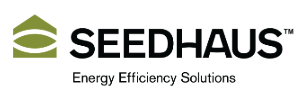When you hear “prefab homes,” you might imagine a dull, cookie-cutter box. But the reality in Queensland is very different. Today’s eco-friendly prefabricated homes are architecturally designed, sustainable, and perfectly suited to our subtropical lifestyle. And with energy efficiency at the heart of the conversation, it’s no surprise they’re becoming one of the fastest-growing housing trends.
At SEEDHAUS®, we’re all about helping homeowners, designers, and builders understand the energy efficiency side of housing. Prefab is one of the most exciting shifts we’re seeing – and here’s why.
At SEEDHAUS®, we support this movement by helping homeowners, designers, and builders make informed choices about energy performance, Passive House principles, and sustainable design. Prefab is just one pathway to a future where energy-efficient housing is the norm, not the exception.
Why Eco-Friendly Prefab Homes Are Taking Off in Queensland
1. Built With Sustainability in Mind
Prefab homes are manufactured in controlled environments, which dramatically reduces construction waste. They’re also designed with sustainable materials, renewable energy options, and passive design strategies that align perfectly with Queensland’s push toward greener living.2. Tailored for the Climate
From the summer heat of Brisbane to coastal breezes on the Sunshine Coast, prefab homes can be designed for natural ventilation, solar orientation, and energy efficiency. With the right guidance, owners can reduce their reliance on artificial cooling and slash energy bills.3. Faster, More Predictable Builds
Traditional builds often face weather delays (something every Queenslander knows all too well). Prefabrication keeps most of the process indoors, making it quicker, smoother, and easier to manage costs – with less environmental impact.4. Cost-Effective and Energy Smart
Prefab doesn’t just save on time – it can save on energy costs long term. By incorporating efficient glazing, insulation, shading, and renewable energy systems, eco-prefab homes are designed to perform better for both your wallet and the environment.5. Flexible and Future-Ready
Prefab doesn’t mean one-size-fits-all. Homes can be modular, adaptable, and scalable – great for families in growing communities like Logan or downsizers on the Gold Coast. And because the design process often prioritises energy efficiency, they’re future-ready for changing climate standards.Why This Trend Matters
Eco-friendly prefabricated homes aren’t just a housing trend – they’re part of the bigger movement toward sustainable, energy-efficient living. With construction costs rising and Queensland homeowners increasingly conscious of their carbon footprint, prefab homes offer a smart, forward-thinking solution.At SEEDHAUS®, we support this movement by helping homeowners, designers, and builders make informed choices about energy performance, Passive House principles, and sustainable design. Prefab is just one pathway to a future where energy-efficient housing is the norm, not the exception.
